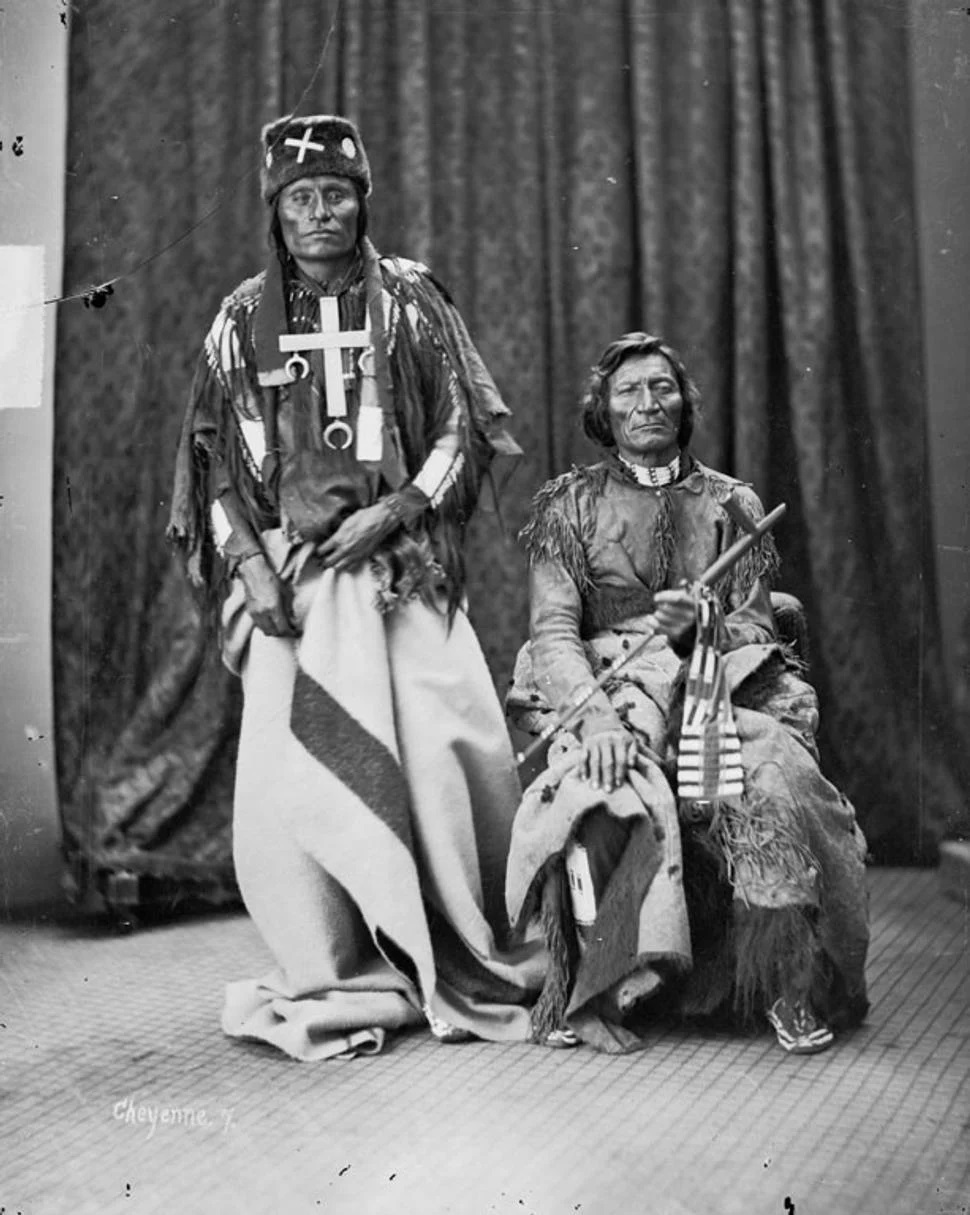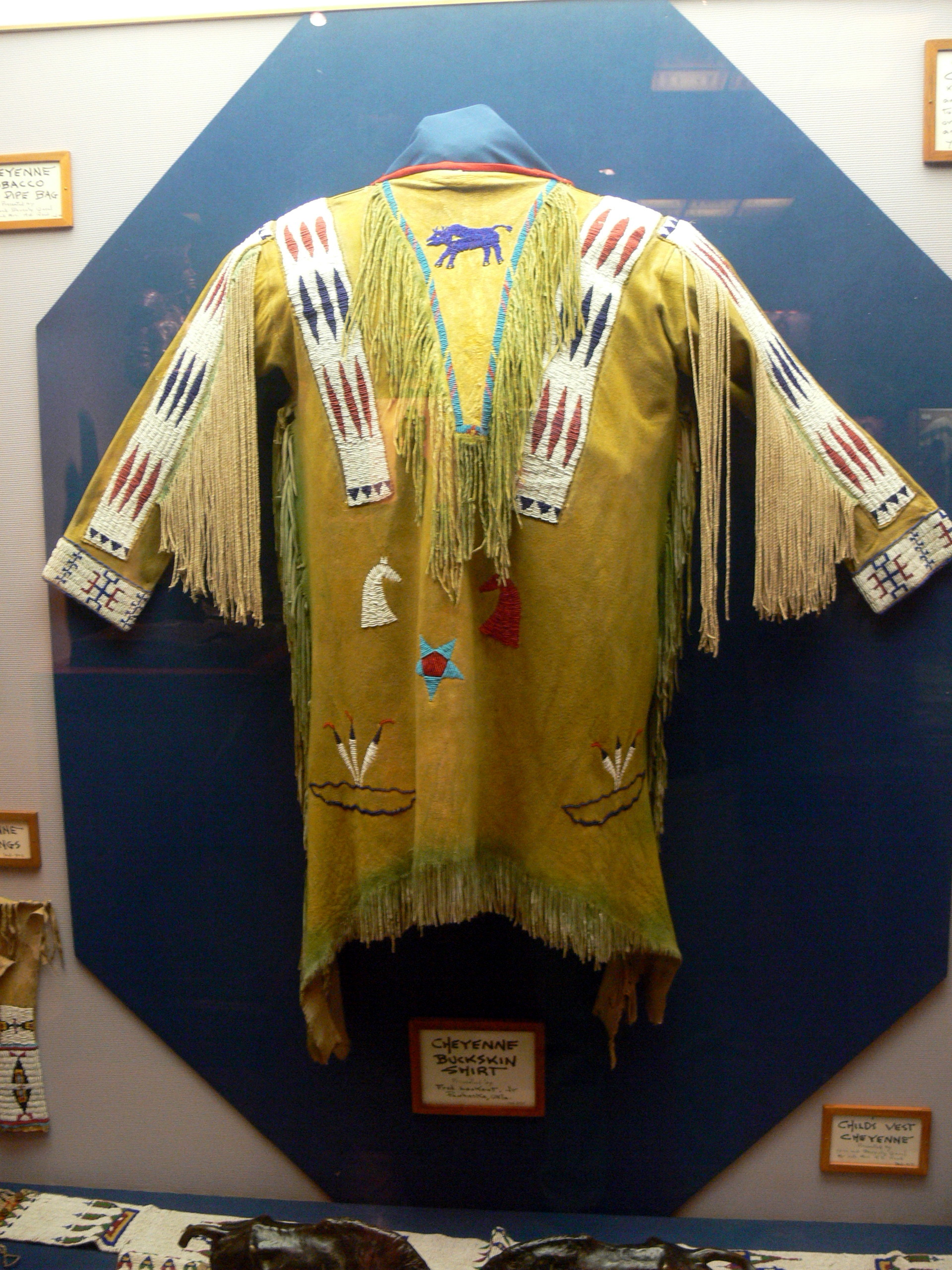|
Dull Knife
Morning Star (Cheyenne: ''Vóóhéhéve''; also known by his Lakota Sioux name ''Tȟamílapȟéšni'' or its translation, Dull Knife) (1810–1883) was a great chief of the Northern Cheyenne people and headchief of the ''Notameohmésêhese'' ("Northern Eaters"; also simply known as ''Ȯhmésėhese'' or "Eaters") band on the northern Great Plains during the 19th century. He was noted for his active resistance to westward expansion and the United States federal government. It is due to the courage and determination of Morning Star and other leaders that the Northern Cheyenne still possess a homeland in their traditional country in present-day Montana. Although he was known as "Dull Knife" (or ''Motšêške Ôhnêxahpo'' in Cheyenne, a translation of his Lakota name) to local settlers, U.S. military leaders, and other American Indians, his Cheyenne name is translated as "Morning Star". A Cheyenne warrior in every sense of the word, Morning Star was described by many writers of the ... [...More Info...] [...Related Items...] OR: [Wikipedia] [Google] [Baidu] |
Cheyenne
The Cheyenne ( ) are an Indigenous people of the Great Plains. Their Cheyenne language belongs to the Algonquian language family. Today, the Cheyenne people are split into two federally recognized nations: the Southern Cheyenne, who are enrolled in the Cheyenne and Arapaho Tribes in Oklahoma, and the Northern Cheyenne, who are enrolled in the Northern Cheyenne Tribe of the Northern Cheyenne Indian Reservation in Montana. The Cheyenne comprise two Native American tribes, the Só'taeo'o or Só'taétaneo'o (more commonly spelled as Suhtai or Sutaio) and the Tsétsêhéstâhese (also spelled Tsitsistas, The term for the Cheyenne homeland is ''Tsiihistano''. Language The Cheyenne of Montana and Oklahoma speak the Cheyenne language, known as ''Tsêhésenêstsestôtse'' (common spelling: Tsisinstsistots). Approximately 800 people speak Cheyenne in Oklahoma. There are only a handful of vocabulary differences between the two locations. The Cheyenne alphabet contains 14 letters. Th ... [...More Info...] [...Related Items...] OR: [Wikipedia] [Google] [Baidu] |
Northern Cheyenne Exodus
The Northern Cheyenne Exodus, also known as Dull Knife's Raid, the Cheyenne War, or the Cheyenne Campaign, was the attempt of the Northern Cheyenne to return to the north, after being placed on the Southern Cheyenne reservation in the Indian Territory, and the United States Army operations to stop them. The period lasted from 1878 to 1879. Background Following the Battle of the Little Bighorn attempts by the U.S. Army to subdue the Northern Cheyenne intensified. In 1877, after the Dull Knife Fight, when Crazy Horse surrendered at Fort Robinson a few Cheyenne chiefs and their people surrendered as well. The Cheyenne chiefs that surrendered at the fort were Dull Knife, Little Wolf, Standing Elk, and Wild Hog with nearly one thousand Cheyenne. On the other hand, Two Moon surrendered at Fort Keogh with three hundred Cheyenne in 1877. The Cheyenne wanted and expected to live on the reservation with the Sioux in accordance with an April 29, 1868 treaty of Fort Laramie of which both Dul ... [...More Info...] [...Related Items...] OR: [Wikipedia] [Google] [Baidu] |
Native American Leaders
Native may refer to: People * Jus soli, citizenship by right of birth * Indigenous peoples, peoples with a set of specific rights based on their historical ties to a particular territory ** Native Americans (other) In arts and entertainment * Native (band), a French R&B band * Native (comics), a character in the X-Men comics universe * ''Native'' (album), a 2013 album by OneRepublic * ''Native'' (2016 film), a British science fiction film * ''The Native'', a Nigerian music magazine In science * Native (computing), software or data formats supported by a certain system * Native language, the language(s) a person has learned from birth * Native metal, any metal that is found in its metallic form, either pure or as an alloy, in nature * Native species, a species whose presence in a region is the result of only natural processes Other uses * Northeast Arizona Technological Institute of Vocational Education (NATIVE), a technology school district in the Arizona portion of ... [...More Info...] [...Related Items...] OR: [Wikipedia] [Google] [Baidu] |
Cheyenne People
The Cheyenne ( ) are an Indigenous people of the Great Plains. Their Cheyenne language belongs to the Algonquian languages, Algonquian language family. Today, the Cheyenne people are split into two federally recognized tribe, federally recognized nations: the Southern Cheyenne, who are enrolled in the Cheyenne and Arapaho Tribes in Oklahoma, and the Northern Cheyenne, who are enrolled in the Northern Cheyenne Tribe of the Northern Cheyenne Indian Reservation in Montana. The Cheyenne comprise two Native Americans in the United States, Native American tribes, the Só'taeo'o or Só'taétaneo'o (more commonly spelled as Suhtai or Sutaio) and the Tsétsêhéstâhese (also spelled Tsitsistas, The term for the Cheyenne homeland is ''Tsiihistano''. Language The Cheyenne of Montana and Oklahoma speak the Cheyenne language, known as ''Tsêhésenêstsestôtse'' (common spelling: Tsisinstsistots). Approximately 800 people speak Cheyenne in Oklahoma. There are only a handful of vocabulary d ... [...More Info...] [...Related Items...] OR: [Wikipedia] [Google] [Baidu] |
Bury My Heart At Wounded Knee
''Bury My Heart at Wounded Knee: An Indian History of the American West'' is a 1970 non-fiction book by American writer Dee Brown that covers the history of Native Americans in the American West in the late nineteenth century. The book expresses details of the history of American expansionism from a point of view that is critical of its effects on the Native Americans. Brown describes Native Americans' displacement through forced relocations and years of warfare waged by the United States federal government. The government's dealings are portrayed as a continuing effort to destroy the culture, religion, and way of life of Native American peoples. Helen Hunt Jackson's 1881 book ''A Century of Dishonor'' is often considered a nineteenth-century precursor to Dee Brown's book. Before the publication of ''Bury My Heart...'', Brown had become well-versed in the history of the American frontier. Having grown up in Arkansas, he developed a keen interest in the American West, and durin ... [...More Info...] [...Related Items...] OR: [Wikipedia] [Google] [Baidu] |
Dee Brown (writer)
Dorris Alexander "Dee" Brown (February 29, 1908 – December 12, 2002) was an American novelist, historian, and librarian. His most famous work, ''Bury My Heart at Wounded Knee'' (1970), details the history of the United States' westward colonization of the continent between 1830 and 1890 from the point of view of Native Americans. Personal life Born in Alberta, Louisiana, a sawmill town, Brown grew up in Ouachita County, Arkansas, which experienced an oil boom when he was thirteen years old. Brown's mother later relocated to Little Rock so he and his brother and two sisters could attend a better high school. He spent much time in the public library. Reading the three-volume ''History of the Expedition under the Command of Captains Lewis and Clark'' helped him develop an interest in the American West. He also discovered the works of Sherwood Anderson and John Dos Passos, and later William Faulkner and Joseph Conrad. He cited these authors as those most influential on his o ... [...More Info...] [...Related Items...] OR: [Wikipedia] [Google] [Baidu] |
Chief Dull Knife College
Chief Dull Knife College is a public tribal land-grant community college on the Northern Cheyenne Indian Reservation in Lame Deer, Montana. It is an open-admission college with about 141 students. On average, more than half of its graduates move on to four-year colleges. The college has one main building which houses administration, faculty offices, cafeteria facilities, bookstore, a learning center and sufficient classroom space to serve 300 students. Specialized laboratory facilities include a science laboratory, two computing labs, and a distance learning center and welding laboratory. In addition, separate facilities house the library, information technology, cultural center, the early childhood learning center, the adult education literacy center, the technical skills center, student activities center, student learning center, student lounge and Vocational Rehabilitation Center. History Previously known as Dull Knife Memorial College, CDKC was renamed in 2001 to emphasize t ... [...More Info...] [...Related Items...] OR: [Wikipedia] [Google] [Baidu] |


